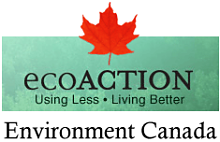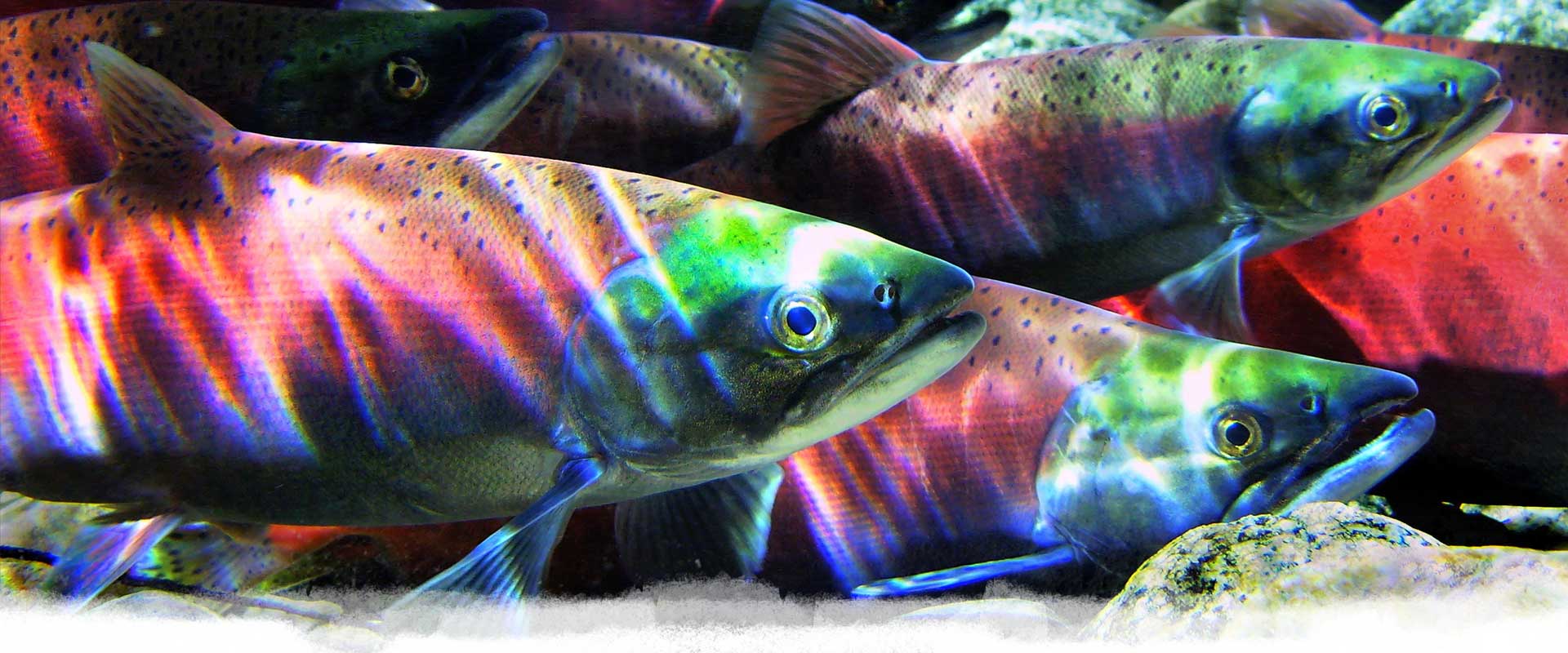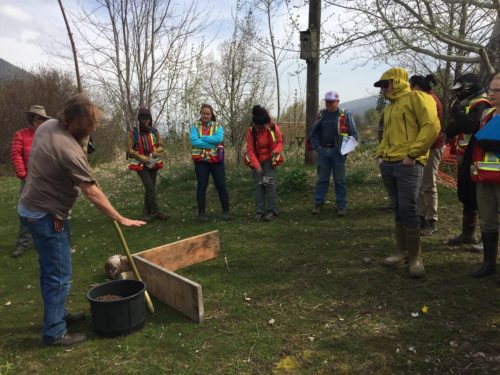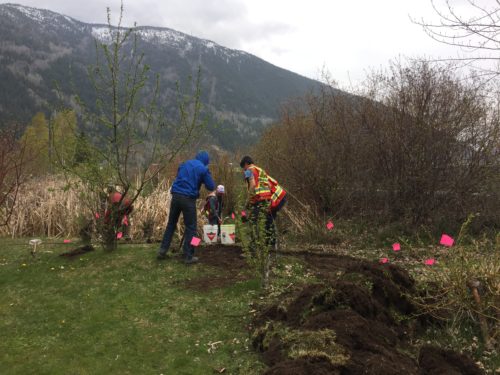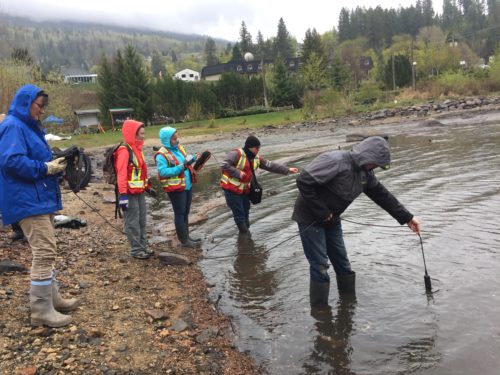
01 May Duck Bay Restoration Day with Selkirk College School of Environment & Geomatics
On Saturday April 28th, the Friends of Kootenay Lake Stewardship Society (FOKLSS) hosted 16 students from the Integrated Environmental Planning Program at Selkirk College for a shoreline restoration day.
Integrated Environmental Planning Instructor, Brenda Beckwith, brought students from the Castlegar campus to test their knowledge and contribute to a real-life environmental restoration project here in Nelson, BC.
Throughout the day, students identified plant species, created site analyses, planted over 200 native plants, and helped with the expansion of an existing wetland. Students had the opportunity to speak with local plant specialists and environmental advisors working on the project including Gregoire Lamoureux, Slocan River Streamkeepers; Thor Smestad, Treebear Native Plants & Ecological Services; Allison Lutz, Selkirk College; Chris Black, Selkirk College Graduate; and Heather Leschied, Living Lakes Canada. Drawing from their year of related studies, students assessed the area and offered proposed restoration solutions to FOKLSS.
Situated between Save-On-Foods and the Lakeside soccer fields, Duck Bay is a popular recreational location for both tourists and Nelson residents alike. By planting native species and expanding the existing wetland, FOKLSS is helping to mitigate shoreline erosion, minimize trampling and predation of plants, limit contaminants entering the lake, and provide additional habitat for local wildlife. Over the summer, FOKLSS will continue to host planting days and will be upgrading and adding to the interactive signage currently at Duck Bay.
For more information on the Selkirk Student Restoration Day and the Duck Bay Restoration Project:
Email: info@friendsofkootenaylake.ca
This project is made possible with the support of:

